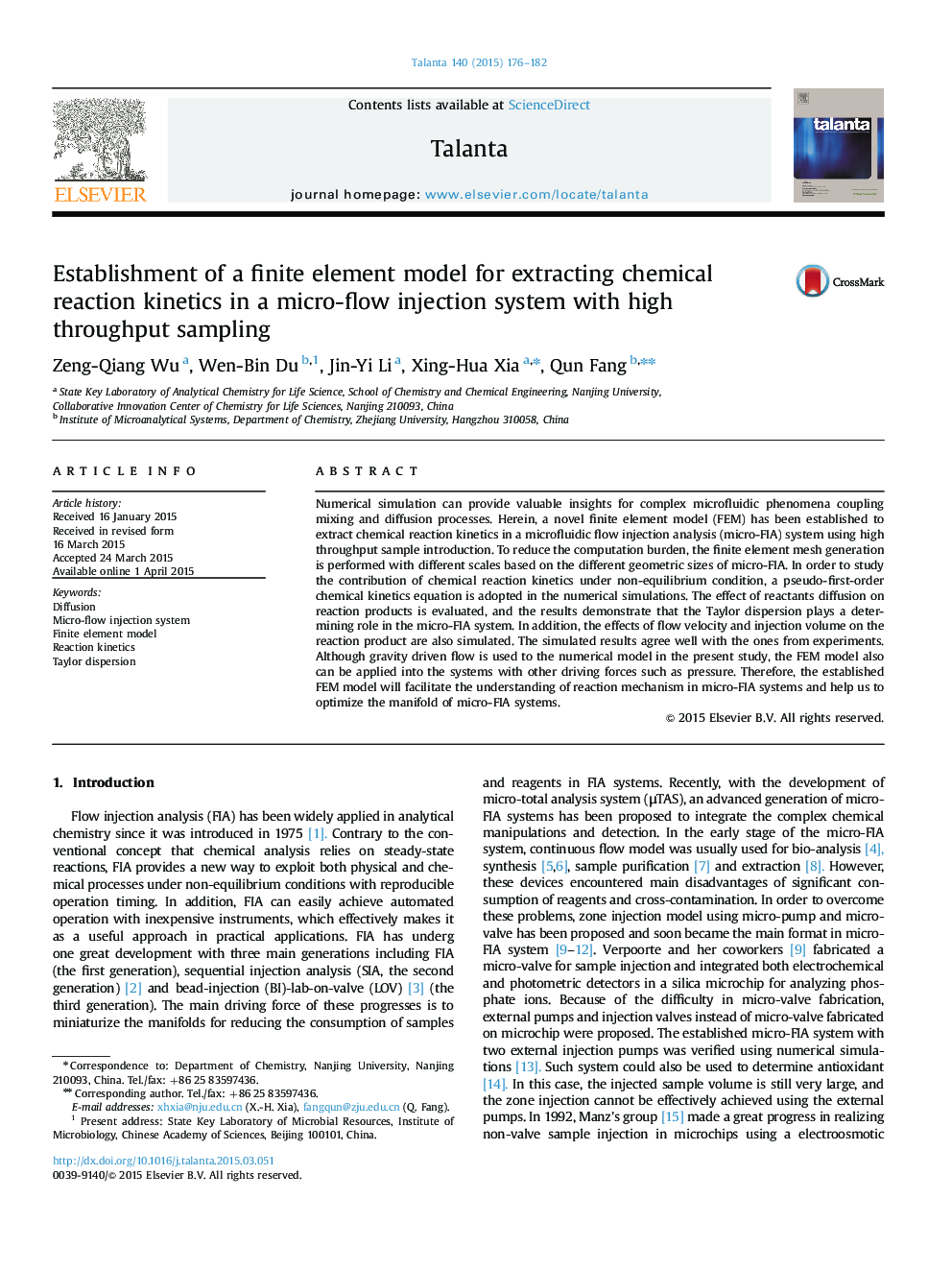| Article ID | Journal | Published Year | Pages | File Type |
|---|---|---|---|---|
| 1243073 | Talanta | 2015 | 7 Pages |
•A novel FEM approach is used to extract chemical reaction kinetics in a microfluidic system.•The sample injection was driven by gravity.•Simulation shows the importance of Taylor dispersion on reaction kinetics.•Taylor dispersion induces a non-linear reaction kinetics for pseudo-first-order reaction.
Numerical simulation can provide valuable insights for complex microfluidic phenomena coupling mixing and diffusion processes. Herein, a novel finite element model (FEM) has been established to extract chemical reaction kinetics in a microfluidic flow injection analysis (micro-FIA) system using high throughput sample introduction. To reduce the computation burden, the finite element mesh generation is performed with different scales based on the different geometric sizes of micro-FIA. In order to study the contribution of chemical reaction kinetics under non-equilibrium condition, a pseudo-first-order chemical kinetics equation is adopted in the numerical simulations. The effect of reactants diffusion on reaction products is evaluated, and the results demonstrate that the Taylor dispersion plays a determining role in the micro-FIA system. In addition, the effects of flow velocity and injection volume on the reaction product are also simulated. The simulated results agree well with the ones from experiments. Although gravity driven flow is used to the numerical model in the present study, the FEM model also can be applied into the systems with other driving forces such as pressure. Therefore, the established FEM model will facilitate the understanding of reaction mechanism in micro-FIA systems and help us to optimize the manifold of micro-FIA systems.
Graphical abstractSchematic diagram of micro-FIA system and FEM simulation results.Figure optionsDownload full-size imageDownload as PowerPoint slide
